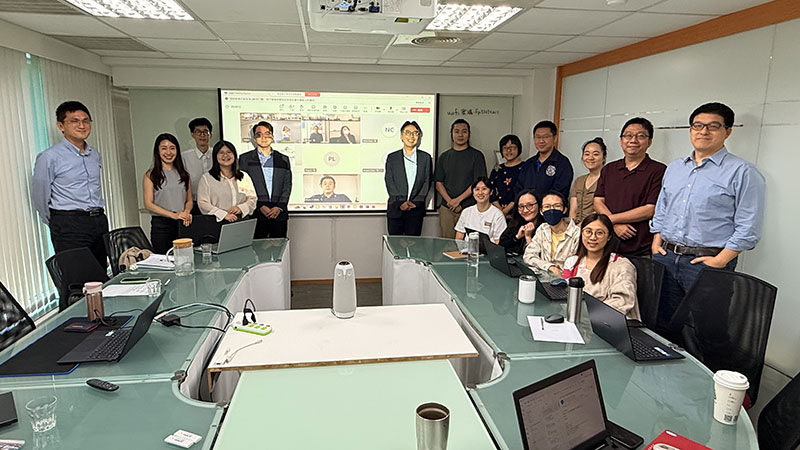Environment
Energy Management
| Description of Importance | Impact Assessment | Value Chain Impact | Corresponding Section of Management Approach | ||
|---|---|---|---|---|---|
| Upstream | Midstream | Downstream | |||
| With rising energy costs and increasingly stringent environmental regulations, effective energy management is critical. Efficient energy use can reduce operating costs, lower the carbon footprint, and enhance the company's social responsibility image. | Energy management is an issue that companies must take seriously, especially in the context of growing energy demand and government policies supporting sustainable development. Improving energy efficiency also ensures compliance with environmental regulations, strengthens competitiveness, and aligns with government policies supporting sustainable development. | ● | ● | 3.1 Energy Management | |
| Corresponding GRI Disclosure | GRI 302 | Linked SDGs |

|
Formosa Pharmaceuticals currently operates only office premises with a headcount of 19, and leases a laboratory from its parent company, Formosa Laboratories, Inc.. Energy consumption is similar to that of a general office setting. Therefore, a more comprehensive energy management model will be gradually implemented following the completion of the Company’s Scope 2 carbon reduction strategy in the future.
Policy or Commitment
Conduct annual electricity consumption statistics
Indicators and Targets
- Short-term Target: Through the implementation of ISO 14064-1:2018 greenhouse gas inventory, measure Scope 2 emissions related to electricity consumption.
- Mid-term Target: Formulate a Scope 2 carbon reduction strategy, prioritizing the use of solar panels as the energy source for the laboratory leased from the parent company.
- Long-term Target: Implement the Scope 2 carbon reduction strategy by switching to energy-efficient products.
Tracking and Management Mechanism
Regularly convene quality improvement management review meetings to review major quality issues and develop improvement plans in order to enhance quality, improve efficiency, and achieve energy conservation.
Annual Actions and Results
In 2024, engaged external consultants to conduct ISO 14064-1:2018 inventory and initiated analysis and management of electricity consumption.
Climate Change
| Description of Importance | Impact Assessment | Value Chain Impact | Corresponding Section of Management Approach | ||
|---|---|---|---|---|---|
| Upstream | Midsteam | Downsteam | |||
| As taking action on climate change becomes an international consensus, companies are increasingly investing in green technologies and sustainable practices to address the challenges posed by climate change. | The impact of climate change on enterprises is growing. Extreme weather events, resource shortages, and regulatory changes increase the risks companies face, forcing adjustments in operations and supply chain management, and may even raise costs. | ● | ● | ● | 3.2 Climate Change |
| Corresponding GRI Disclosure | GRI 201-2M GRI 305 | Linked SDGs |

|
Policy or Commitment
Referencing industry peers and international trends, assess and set the timeline for carbon reduction targets and analyze the feasibility of achieving net-zero emissions.
Indicators and Targets
- Short-term Target: Conduct GHG inventory and obtain ISO 14064-1:2018 verification.
- Mid-term Target: Promote GHG inventory implementation for consolidated subsidiaries.
- Long-term Target: Ensure consolidated subsidiaries complete GHG inventory verification or assurance.
Tracking and Management Mechanism
Follow the Financial Supervisory Commission’s “Sustainable Development Roadmap for TWSE/TPEx Listed Companies” and implement the required GHG inventory and verification/assurance obligations in compliance with regulations.
Annual Actions and Results
Promoted GHG inventory and developed methodologies for Scope 3 data collection, including employee commuting, business travel, and purchased goods and services, while assessing the feasibility of data collection for various GHG emission sources.








